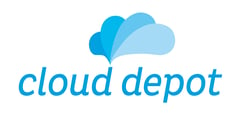This article explains how payments and merchant fees can automatically be generated for you using the clearing account in Xero.
Before you begin, make sure all your settlements from your gateway provider are reconciled and up-to-date.
Set this up first!
Requirements: Please ensure you have setup a clearing account correctly in Xero first, please see this KB for more information.
How it works
Every day at 10:30am NZT, the synchronization tool will retrieve your settlements and fees from your Gateway provider. Once retrieved, the tool will automatically generate the transaction in Xero to your designated clearing account for the settlement amount. It will also factor in any fees and merchant fees, streamlining the reconciliation process for you to easily reconcile with just one click from your Xero bank account.
Details that we import automatically

How it appears in your bank feeds

*The wording in your Xero bank feeds may vary.
How to setup
Recurring Payments -> Configuration -> Link Gateway Bank Accounts
1. Ensure your settlement bank account is a type 'Clearing Account'

2. Under the 'Accounting Reconcile' heading select 'Configure'

3. Configure the following properties
a) Xero Payrix Contact
Note: You must have a Xero customer with the name 'Payrix' or 'GoCardless' used
This contact in Xero is specifically designated for your gateway provider. To ensure it appears in the dropdown list, make sure the contact name includes the name of your gateway provider.
b) Gateway Fees Account
This account code is where the fees associated with your gateway provider are recorded. This account should be a 'Direct Cost'
c) Bank Settlement Account
This is the account where your gateway deposits the funds that have been cleared for settlement.
Make sure the enabled checkbox is ticked and save changes.

4. The Accounting Reconcile option will now show as Active.
![]()
View your bank transactions
To see your bank transactions, simply click on the "Bank Transaction" tab.
You will see two tables displayed: the first table lists the transactions generated by Cloud Depot, while the second table presents the transactions from your clearing account. This setup allows you to easily compare the two, helping you identify any potential duplicates between the manually entered transactions and those created by Cloud Depot.

